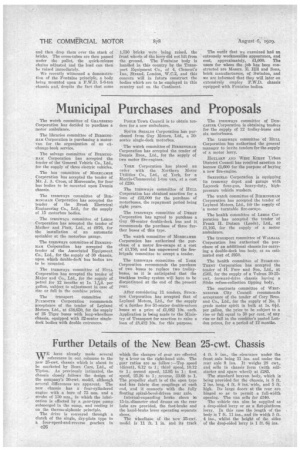REDUCING LABOUR CHARGES in the Transport of Commodities
Page 47

Page 48

If you've noticed an error in this article please click here to report it so we can fix it.
A LTHOUGH comparatively unknown
this 'country, the Fontaine system for the storage and delivery of packed articles has been in use in the United States for the 'past seven years. The method was invented nine years ago, so that it is well tried. It is a method which is eminently 'suitable for employment in connection with the transport of bricks and, in many cases, we are told, has resulted in a 65 per cent. saving in labour.
Briefly, the Fontaine device consists of a mimber of wood pallets, a demountable body, which is provided with lifting eyes to enable it also to function as a crane skip, and a roll-back cradle, the duty of which is to carry the container while it is being lifted and changed from the vertical to the horizontal position. The equipment is completed by a sub-frame having a reversing automatic hoist and derricks which operate the cradle.
The pallets are merely wood platforms with cross-bearers, and upon the former the commodity to be dealt :with is manually packed. The pallets are Of such simple design that they could be constructed by practically unskilled labour.
The container is, in effect, a steel body having a floor and three sides of metal ; the pallet, when the lorry is
loaded, forms the end of the body, only the top being open. The crane-lifting eyes are fitted at the forward end of the container and, at this point, provision is made for the cradle claws to grip. At the rear end of the body four quickrelease chains are disposed, these taking cross-tubes which are passed under the pallet and provide a direct means for The function of the cradle mechanism is to move the loaded container from the vertical to the horizontal position and vice versa. It also locates the container so that the load may be lifted and lowered without it sustaining a shock. Discharge is effected at the rear end of the lorry. A flexible and detachable connection is made between the cradle and the container in order to allow the necessary " float " in picking up the loud.
The sub-frame is equipped with rollers which carry the cradle and act as the fulcrum about which the cradle turns. The necessary reduction ratio is provided by the hoist, whilst a reversing gear and an automatic throw-out gear obviate the risk of the hoist overrunning the lorry.
The usual method of collecting bricks is to run these on small gravity conveyors from the kilns, packing upon the pallet being effected lay hand, as previously stated. By using the container as a skip, the materials may be transferred to the railway. In packing, the ...drivers leave the cradles and containers nearly in a vertical position
and then drop them over the stack of bricks. The cross-tubes are then passed under the pallet, the quick-release chains adjusted and the load can then he raised immediately.
We recently witnessed a demonstration of the Fontaine principle, a body being mounted upon a F.W.D. 5-6-ton chassis and, despite the fact that some
1,750 bricks were being raised, the front wheels of the lorry did not lift from the ground. The Fontaine body is handled in this country by the Transport Equipment Co, of 4, Clement's Inn, Strand, London,_W.C2, and this concern will in future construct the bodies which are to be employed in this country and on the Continent. The outfit that we examined had an extremely workmanlike appearance, and cost, approximately, £1,000. The users for whom the job has been constructed are Messrs. E. rfill and Sons, brick manufacturers, of Swindon, and we are informed that they will later on extensively employ F.W.D. chassis equipped with Fontaine bodies.














































































































